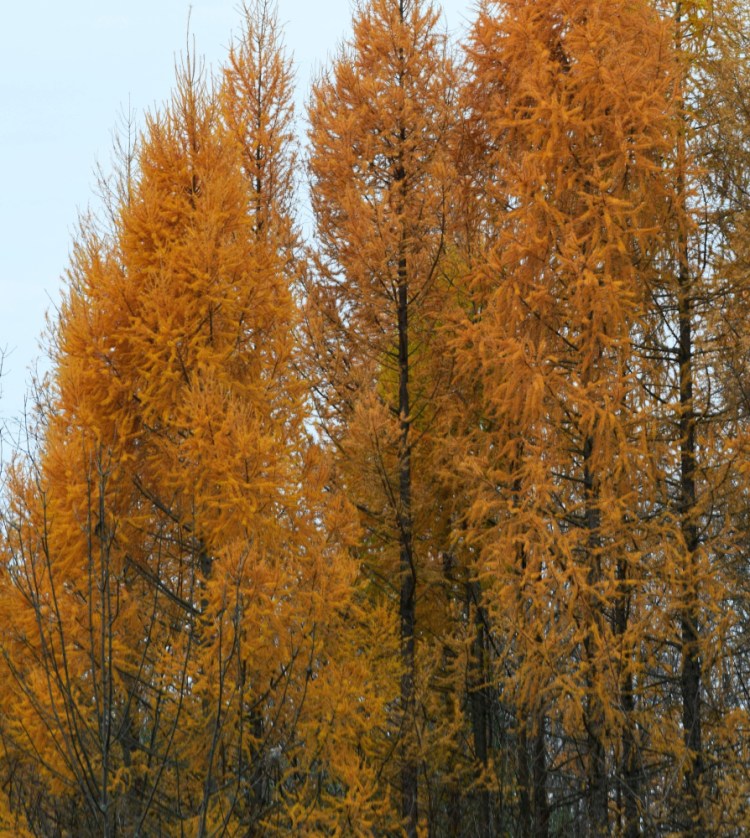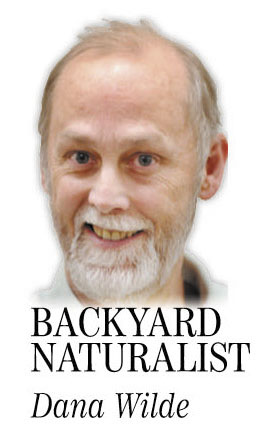When the snow holds off in November, as it’s done pretty steadily for years now, a late-autumn clarity crystallizes on the woods and fields. It’s like looking through a lens. Every solid object in the landscape turns into exactly what it is.
The blue jays, I mean, were blue all spring and summer, of course. But from late October on, their blue, black and white feathers gain a brilliance that didn’t seem to be there before. Or somehow did not strike with such intensity. As if they absorbed the gathering darkness and turned azure into a silhouette.
The same thing happens in the trees. Perched crows stare east in black Giotto profile. All that’s left on maple, birch and ash, chokecherry and winterberry, are tangles of gray stems and twigs, sharper to the eye than the drips of an abstract painting, and more coherent. Oak and beech leaves hang on like copper medallions.
I think it’s the low angles of sunlight that transform the remains of summer into November. Red and yellow October has devolved to amber, brown and burnt sienna. The tamaracks turn a planetary yellow and seem to glow of their own accord, luminescent even on a gray day. Firs and spruces throw long, deep shadows onto hayfields. A fading mown expanse backdrops reed grasses and goldenrods that expired in midsummer but now look like illuminated spirits. In the clear low sun, everything is waiting on winter.
Late mid-November afternoons the sun throws rays of light from less than 10 degrees of altitude over the horizon. At the same time on a mid-June day, its altitude is nearly 44 degrees. So the late-autumn rays come slanting through the atmosphere much shallower, but much deeper on the eye for some reason. I think because at low angles the light’s polarization — which humans experience as glare — is vertical, so the scatter of photons is less. I don’t know. The light seems purer. And so do November’s artifacts — trees, abandoned hayrolls, exploded cattails, red winterberries, slow-collapsing stone walls, birds and stalks of dead grass.
Vertical is the angle of descent.
When I was younger than my son is now, I thought the greatest clarity obtained in August, when the humidity filters out and Canadian air makes its first presageful sweeps. Some years farther on it seemed like September gave the sharpest picture of reality, until, awhile into that hypothesis on how the seasons drive your mind, it started to seem like apple-picking time really is a gauze — of mists, and mellow fruitfulness. September sunlight is not rosy-hued, exactly, but gold in the afternoon. Now in recent years the chill is off October, too. The slant-lit milkweed and wild carrot skeletons by Halloween are signposts to the real turn: November. The monthlong moment when sunlight makes its final descent toward winter.
Has global warming put deep autumn off a month or two? Or are the shapes of things just coming clear that never were in youth? Does age congrue to time of year? You look back, and what you see — the frost perched on the ground, the blue jays stealing from the cat’s dish, the bare birches, the firewood stacked, the deer in rut, the gunshots, the pain in your hip — all looks exactly like what it is and always was, though you never knew it in the glare of the way up.
Winter’s closing in, she said.
Dana Wilde lives in Troy. His book “Summer to Fall” is available from North Country Press www.northcountrypress.com/summer-to-fall.html. You can contact him at naturalist1@dwildepress.net. Backyard Naturalist appears the second and fourth Thursdays each month.
Send questions/comments to the editors.




Comments are no longer available on this story